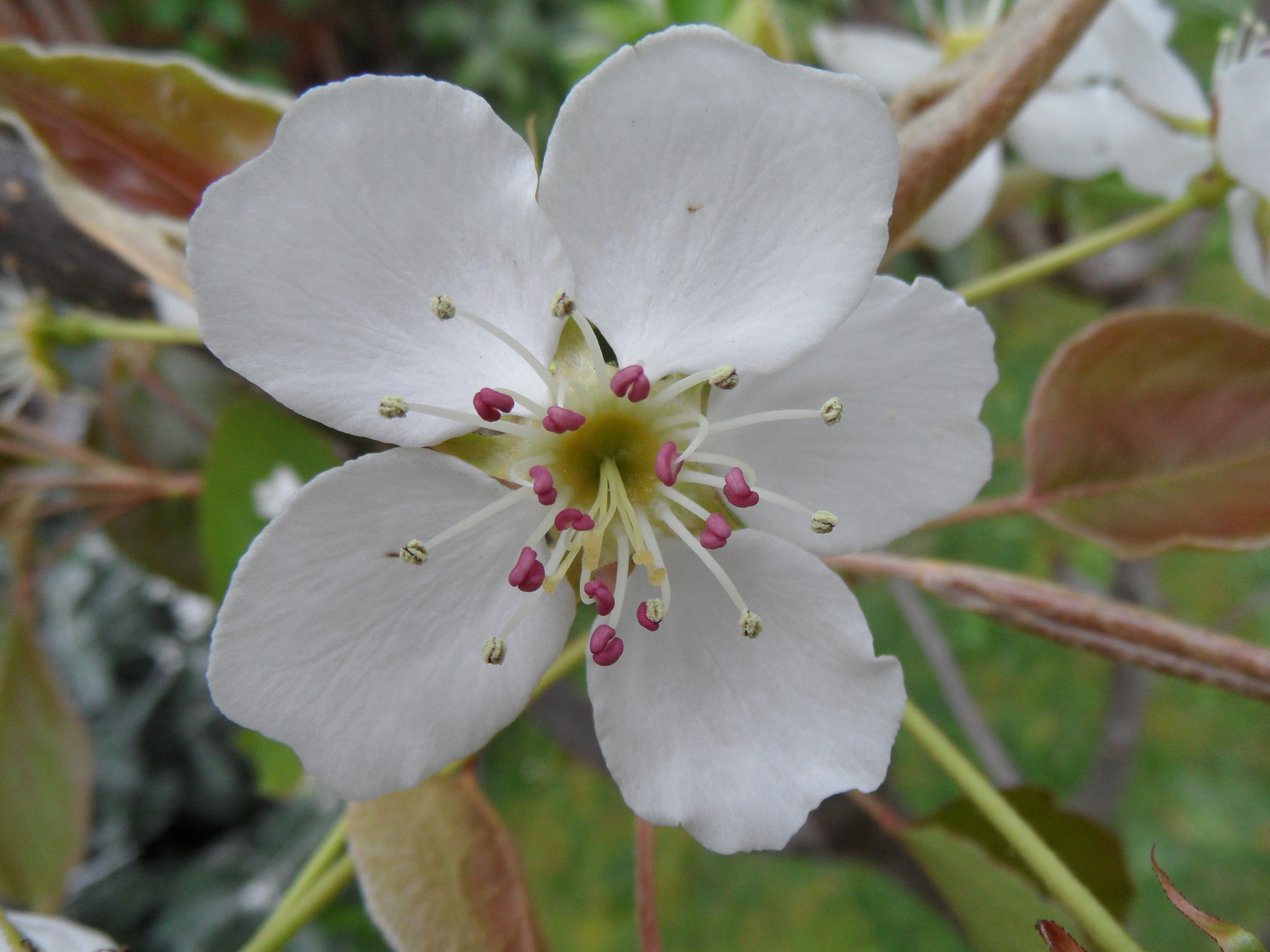
Tree 12-15 m tall, with branches sometimes thorny. Leaves ovoid-elliptic, 3-8 cm long, pointed, hairy at first, margin with teeth round to slightly pointed, brightly coloured in autumn. Leaf stalk thin. Flowers about 3 cm wide; anthers red. Fruits spherical to pear-shaped; styles and fruit chambers (4)5.
Grown since prehistoric times for the edible fruit. However, early varieties were hard and it was only in the 18th century that the soft-fleshed, fragrant varieties known today were selected in France and Belgium. In Australia by far the largest proportion of the pear crop is grown in the Goulburn Valley,Vic, where some of the world's best-quality pears are produced in the ideal local conditions.
var. sativa DC. This is the collective botanical name for the edible cultivars of the European Pear. Here lie most of the traditional edible cultivars of which it has been estimated that there are some 3500, although only a small percentage have been grown in Australia. Most cultivars are self-sterile and must be interplanted with other species or cultivars. Many old cultivars may be found in old gardens and sometimes become naturalised. Edible cultivars listed include 'Williams' (Syn. 'Bartlett', 'Williams' Bon Chrétien'), 'Sensation', 'Howell', 'Packham's Triumph', 'Beurré Bosc', 'Clapp's Favourite', 'Corella Pear', 'Eldorado', 'General LeClerc', 'Joséphine de Malines', 'Keiffer',A'Sophia's Pride' PVJ 6(2)26,A'Tichbon' PVJ 9(4)34, 'Winter Cole', 'Winter Nelis'.
Europe, W Asia.
TAS: Campbell Town (Midland Highway, Seaton Rd); Launceston (Lalla Rd; 48 trees including cvs 'Keiffers' and 'Beurré Clairgeau').
Source: (2002). Rosaceae. In: . Horticultural Flora of South-eastern Australia. Volume 3. Flowering plants. Dicotyledons. Part 2. The identification of garden and cultivated plants. University of New South Wales Press.
